With the car able to move around under its own power, it was time to work on getting it to run well and to see what else it needs to be ready to load up for Florida. Swapping in a good plug got it running a little better, but it was still a little rough. Turns out that a second plug was also not doing so great. It seems like it running a little too rich:
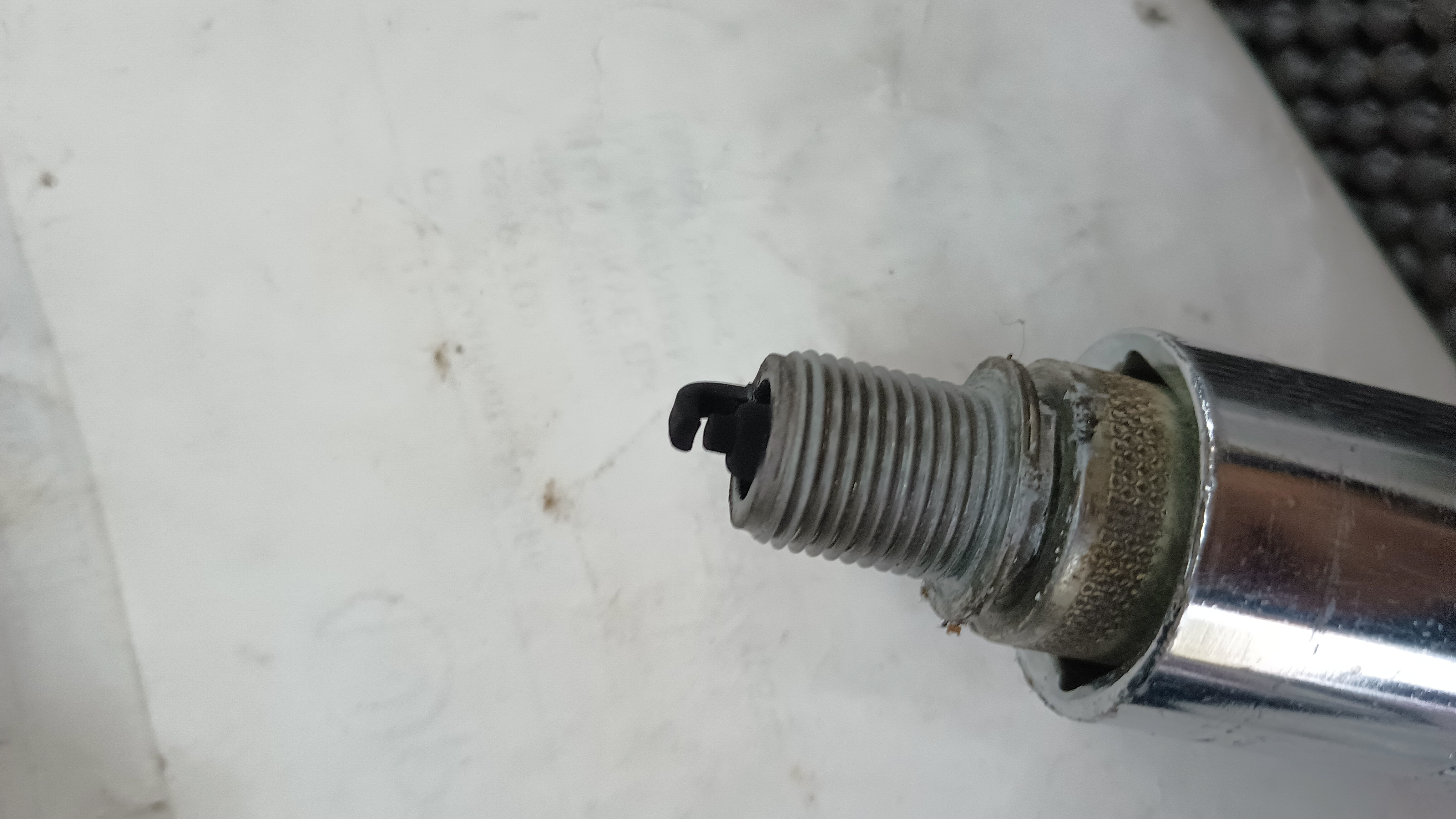
I cleaned the plug up with some sandpaper and a wire brush and got it running a little smoother. Six new plugs and a set of wires are on order.
Since it was running enough to move, I let it have sunlight for the first time in a few months.
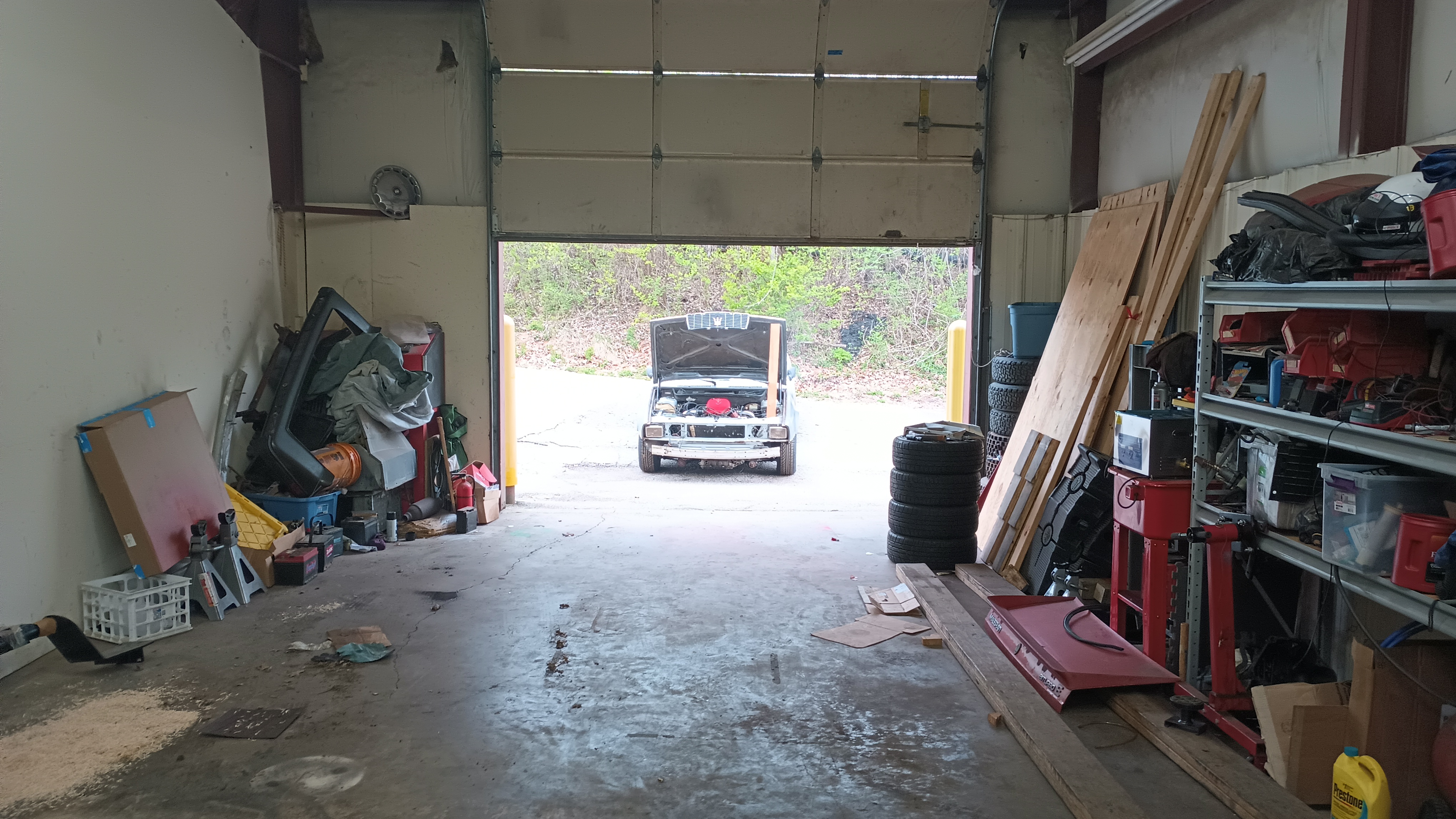
And then back up on the lift to start checking things out.
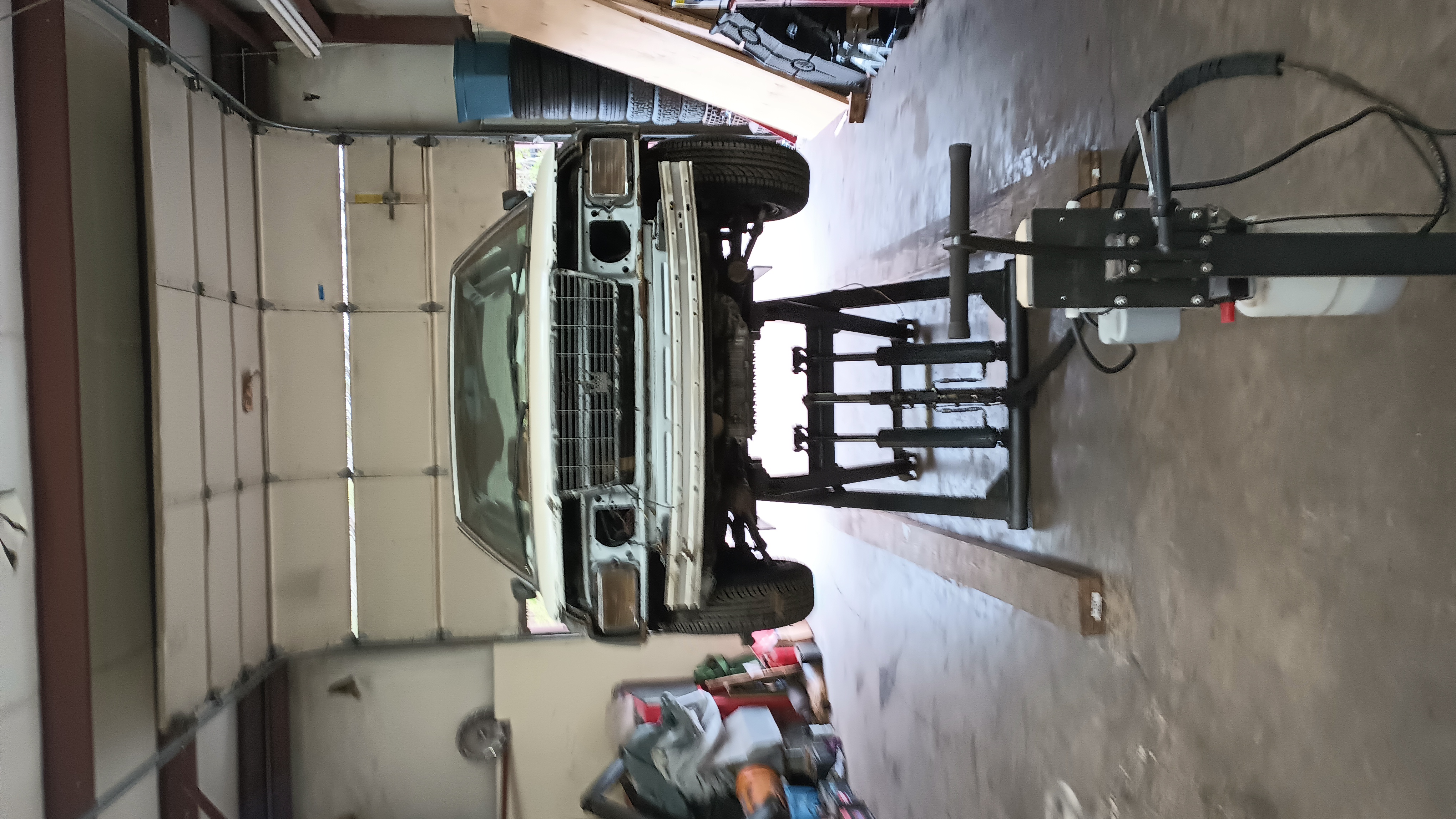
The first thing I wanted to check was that all the wheels were solidly-attached. I went around the car grabbing each wheel at 9 and 3, shaking, grabbing it at 12 and 6, and shaking again. One of the rear wheels had a bit of motion to it, but tightening the lug bolts corrected that. The front-right, on the other hand, had a lot of slop from side-to-side and it was coming from the steering. I got the tie rod boot off and found the source of the slop. While the tie rod itself was good and tight, the arm in the steering rack was flopping around.
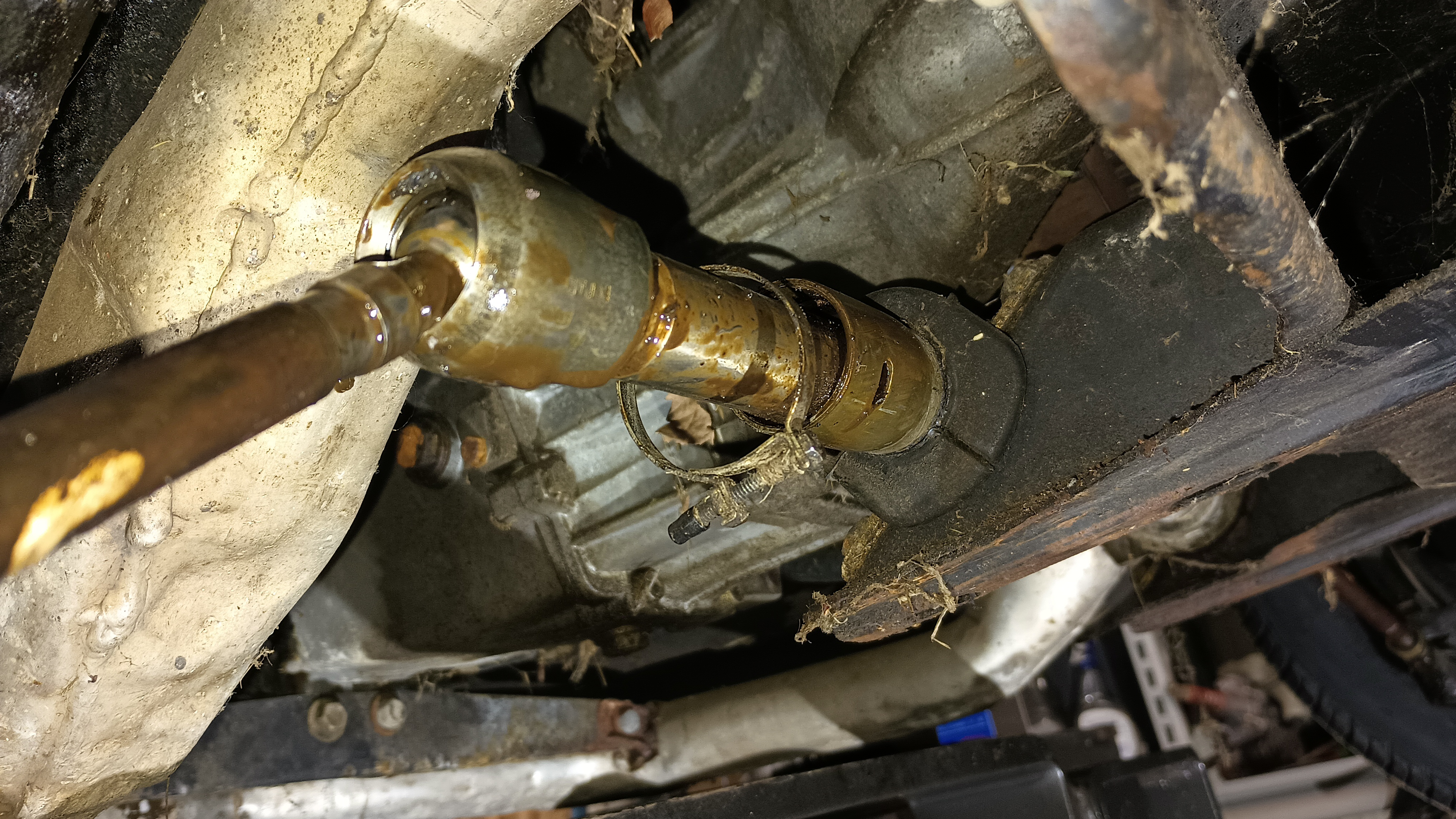
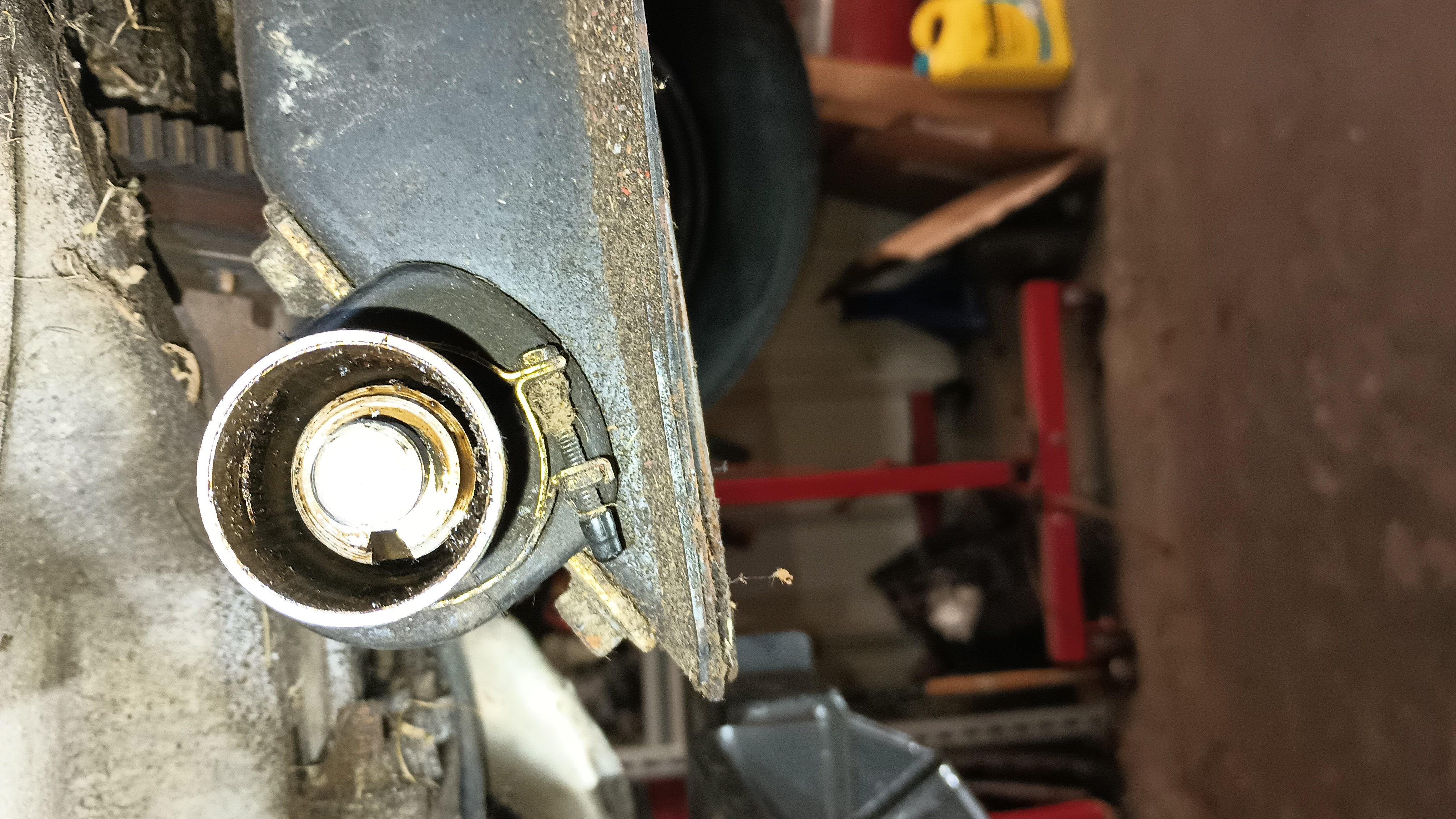
There is supposed to be a nylon bushing there that supports the steering rod. I assume that it came apart at some point because I got a whole bunch of plastic bits that fell out of the boot when I removed it. It looks like some of the bushing stuck to the rod as well.
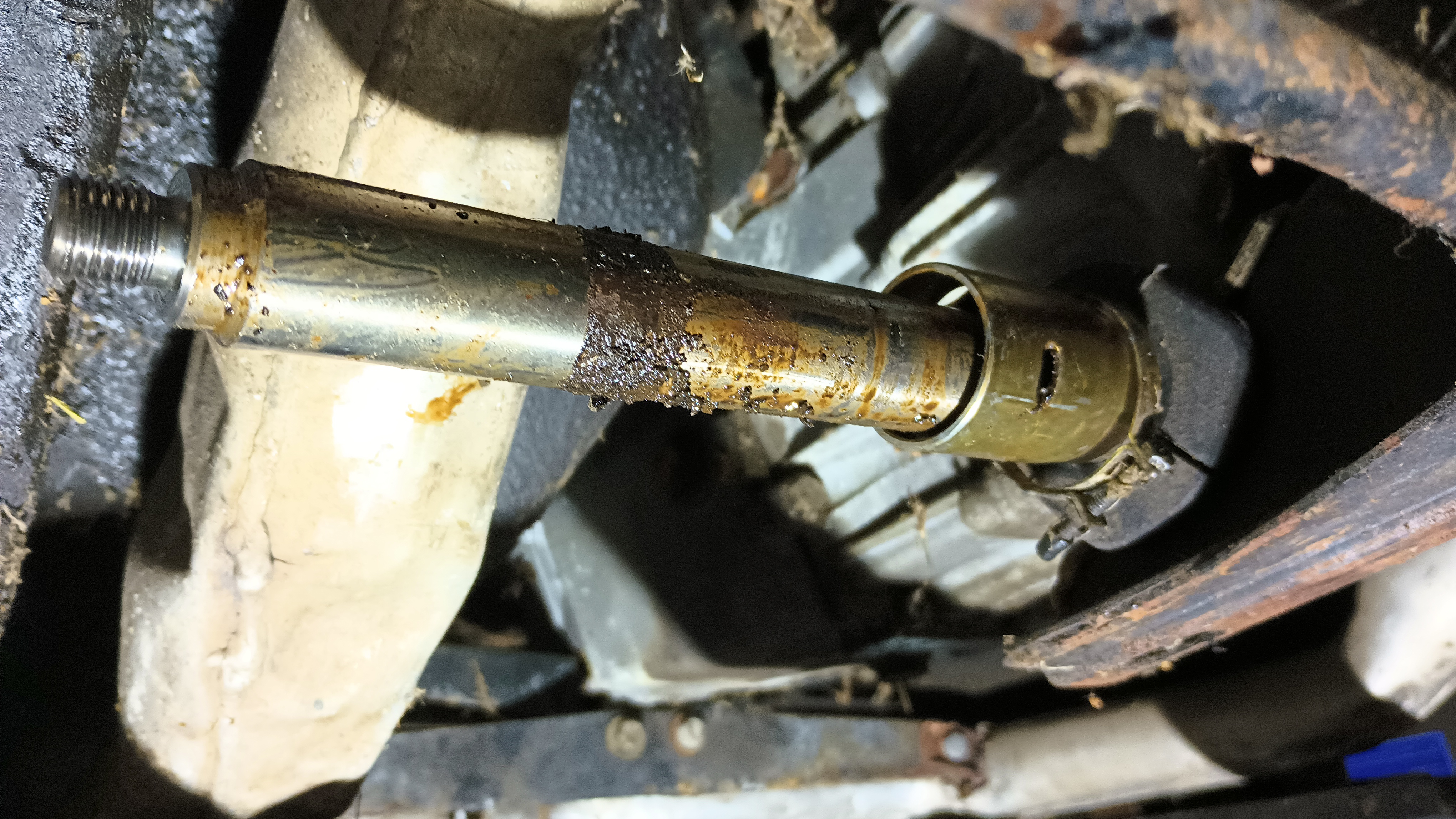
I got the rod cleaned up
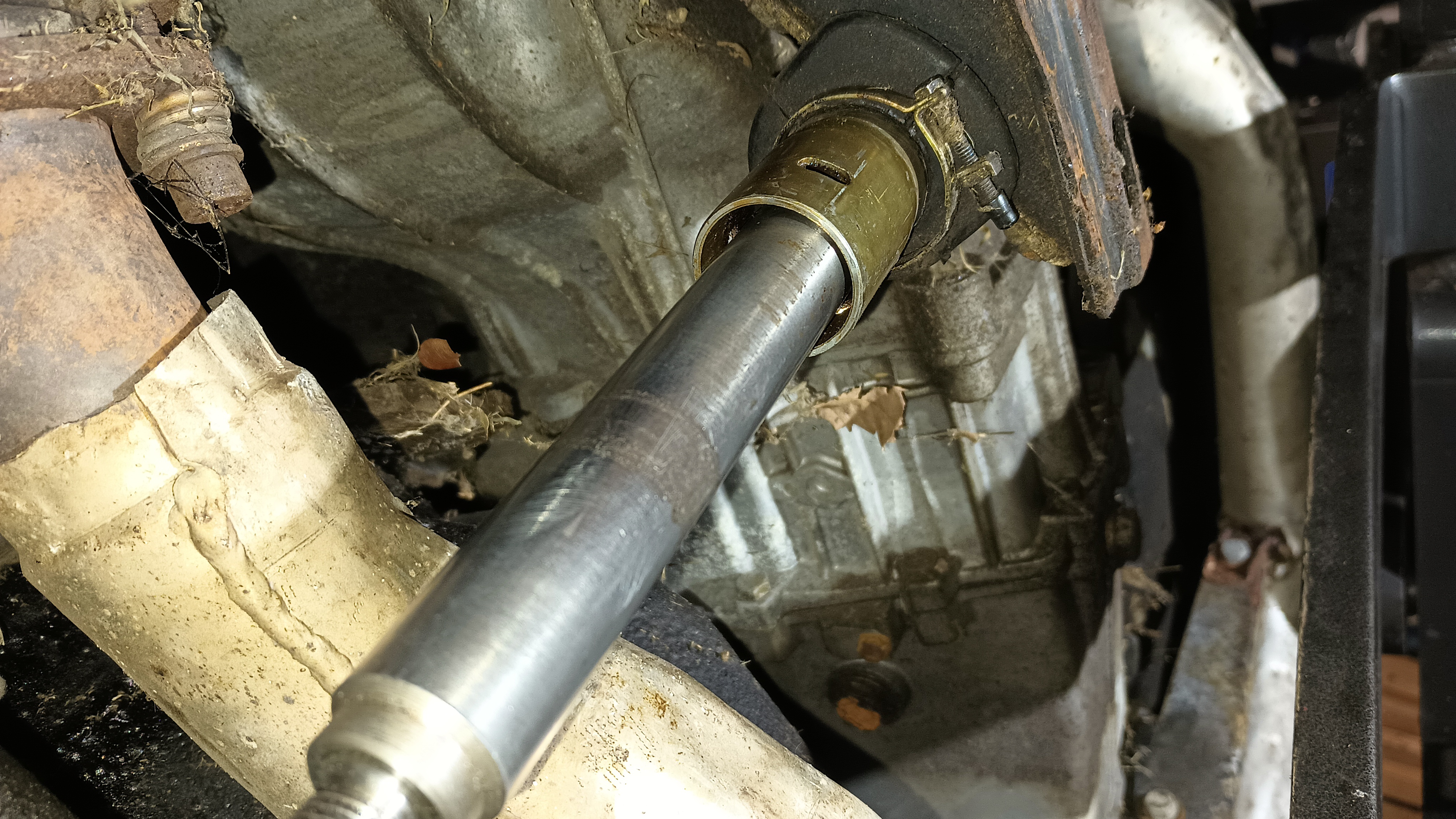
And set about trying to come up with a new bushing of some sort. I assume that the bushing is available in a steering rack rebuild kit of some sort, but I’m running out of time to pull the steering and rebuild it. A trip to the hardware store later and I had one of these:
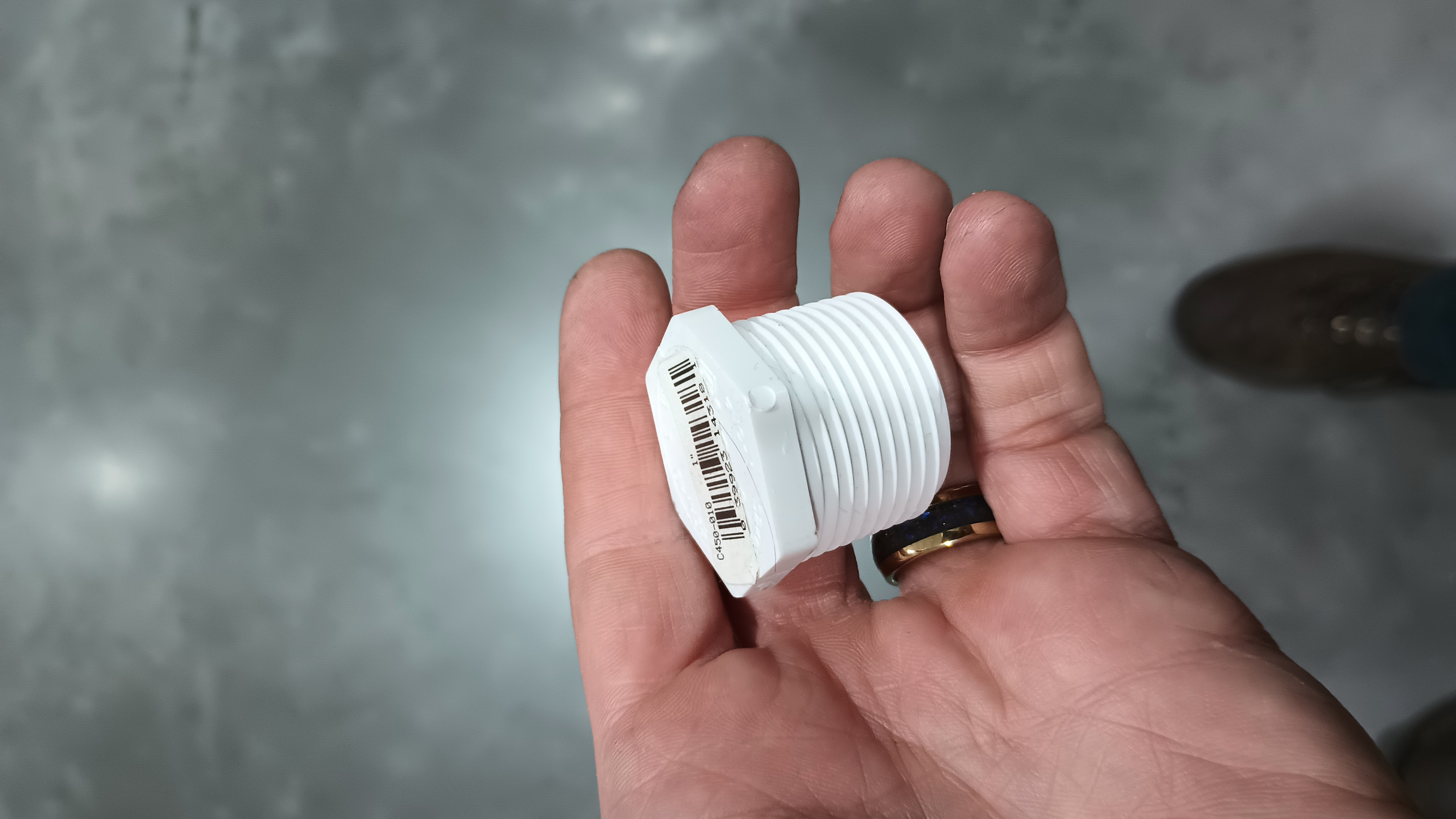
That’s a 1″ PVC fitting that is just a tiny bit larger in diameter than the ID of the steering rack. Bringing it back to the shop, I found the center, put it in the drill press, and hit it with a 1″ paddle bit to bore it out.
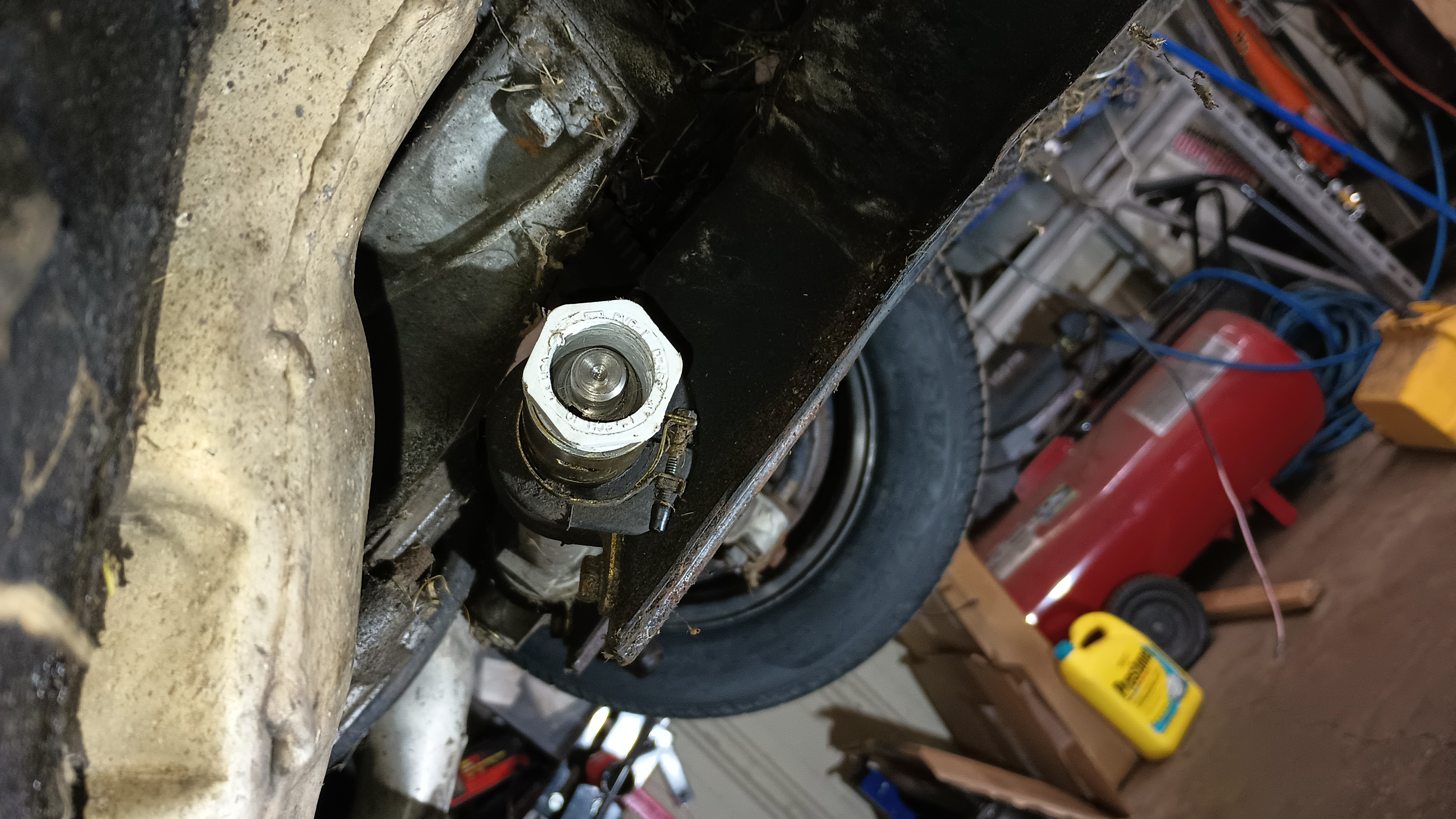
It’s a tight fit in the rack and the rod rides on it with close to zero slop. Using a grinding wheel, I rounded out the hex head, added some grease, and tapped it in with a hammer.
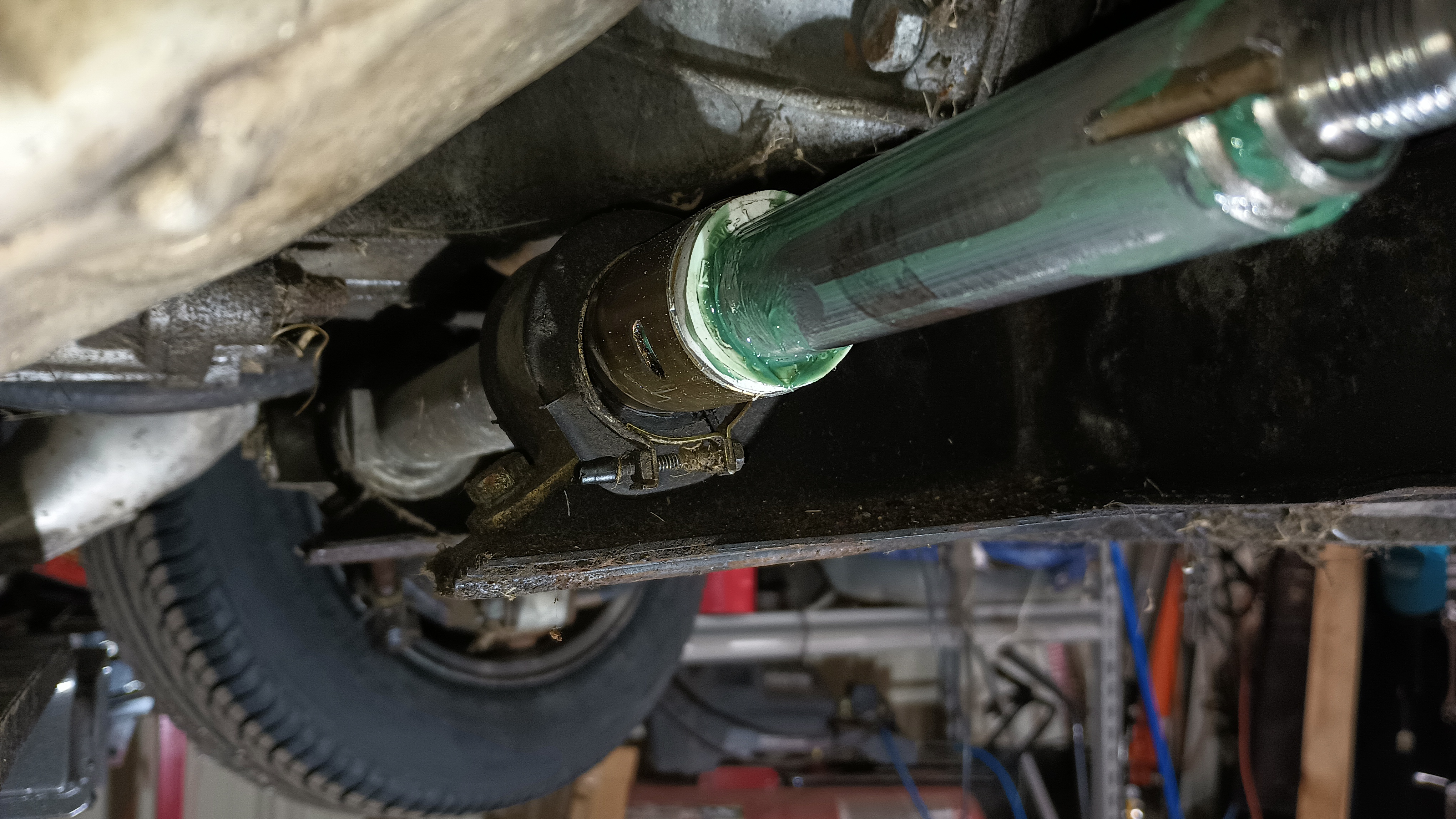
Now the pinion bearing in there is still a bit notchy and I think the rack needs a real rebuild, but for now I think it’s going to get me through.
While it was still on the lift, we got all the remaining clutch bolts tightened up since it’s a two-person job, and then we set about bleeding the brakes again. I had pushed fluid through with the pressure bleeder, but the pedal was still really soft. We did a traditional two-man bleed following the pattern in the service manual. There was still a little bit of nasty fluid left in there which we got out and there were also a few air bubbles left. Upon completion of that quick task, the brake pedal was feeling much more solid.
With the car up in the air, I did discover that there was a little bit of coolant that had dripped to the floor. It appears to be coming from the temperature sensor that screws into the radiator. I might be able to replace the o-ring that’s sealing it or I might just try to seal it with JB Weld. Before leaving for the night, I cleaned up the fluid from the radiator so that the next time I’m there I can see if it’s still leaking and, if so, have a chance at confirming from where.